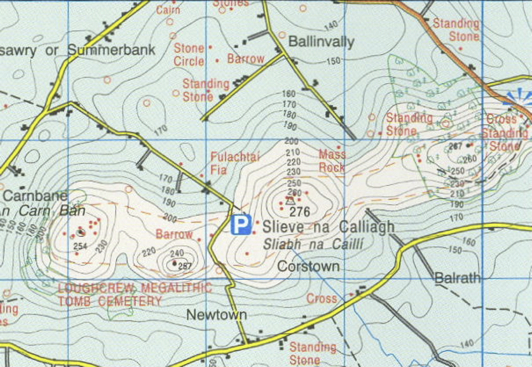Slí Cholmcille - Sli Dhun na nGall
Slí Cholmcille is a section of the 280km Slí Dhún na nGall that circles around the remote landscapes of south west Donegal. The name of the route is derived from that of St Colmcille, one of Ireland's early Christian saints, who was born in County Donegal and lived for a while in this region. He is recalled in the name of Glencolmcille, Donegal's westerlymost village, a place steeped in pre-Christian and early Christian history. The Slí Cholmcille is an 65 km route that connects the main towns and villages of the area, passing through spectacular unspoilt coastal and mountain landscape, including the lonely valley reaching down to the inlet of Port, and the dramatic valley of Glengesh. Although sparsely inhabited today, this area of Donegal was clearly well-populated in former times: the Glencolmcille area in particular is rich in prehistoric and early Christian monuments. The terrain consists mainly of tarmac roads, bog roads, and open moorland. Considerable stretches of the tarmac sections, although through wonderful landscape, are on busy, narrow roads, where care needs to be taken. Open moorland sections, which are quite isolated, can be very wet. The total aggregate ascent over the entire route is 1,600 metres. Overnight accommodation can found at Glencolmcille, Kilcar, Carrick and Ardara.
Maps and other information
Facilities
Car parking
At StartFinish - on street in Ardara

Map Guides
Bealach na Gaeltachta Sli Dhun na Gall Sli Cholmcille - Udaras na Gaeltachta

OSI Maps
Thomas from Wexford
Ivor from Down
Much of the walking (indeed most on days one and three) was on roads, though I didn’t find this a problem. The R230 up Glengesh is quite busy; and the R263 is very much a main road, but Slí Cholmcille only goes along it for a mile or so in total. The off-road sections each day included some pathless mountainsides, which to me were among the highlights of the route. The official summary notes that these sections ‘can be very wet’. This is undoubtedly so, but I didn’t find them any worse than typical mountainsides or moorlands elsewhere in Ireland or Britain.
The way-marking is excellent throughout, so navigation in clear weather presented no difficulties whatsoever. [The only exception was the seeming absence of a waymark in Carrick at the start of the lane up Crockunna, just opposite the school. On investigation, it turned out that the waymark had fallen to the ground.]
The provision of stiles and gates is also good; occasionally a farm gate needed to be climbed. Some new fencing, topped with barbed wire, appears to have been installed near the Glen River and at the saddle between Meenacurrin and Crockuna – stiles need to be (re)instated here, and protection provided from the barbed wire (as it is at other stiles).
I thoroughly enjoyed this walk: there is much of historical and cultural interest, and the scenery everywhere is splendid.
PS. A route description of the section from Port to Ardara can be found at
http://www.discoverireland.ie/Activities-Adventure/the-international-appalachian-trail-port-to-ardara/88153
Jenny from Sligo